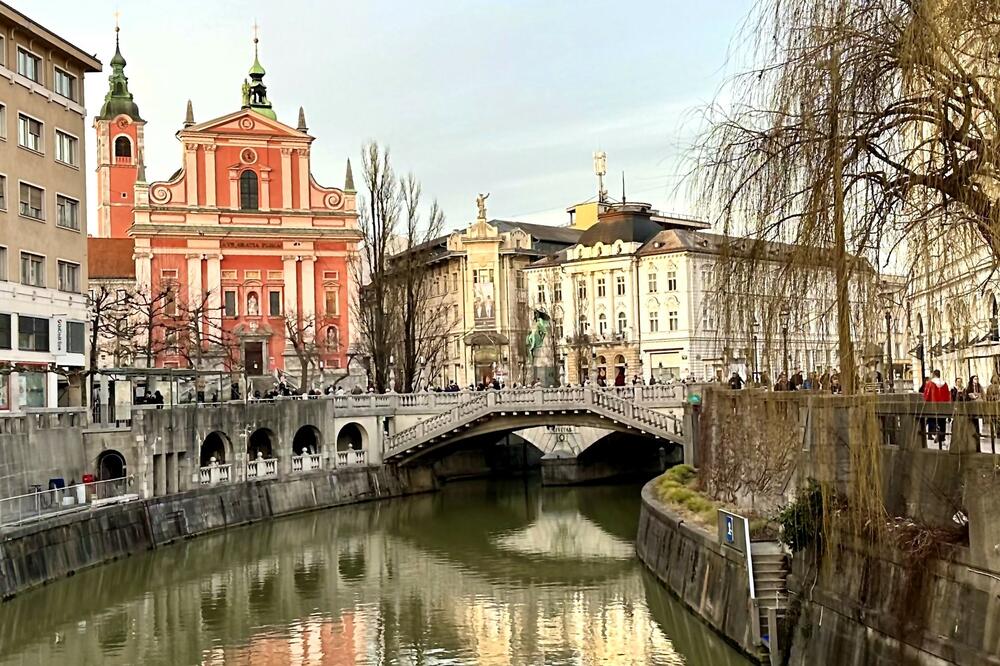The plane is approaching the Ljubljana airport near Brnik. It's clear and below you can make out Slovenia from the common cliché: snowy mountain peaks, coniferous forests, neat meadows, rural houses as if from a postcard. Chance wanted us to fly to Ljubljana from Skopje because a low-budget airline company offered prices for flights to the capital of Slovenia, which were below the prices of bus transportation. As the plane rolls down the runway, I think that we have covered the former Yugoslav diagonal - from Vardar to Triglav.
Actually, we are in Slovenia for the first time. Former transits to Trieste are not counted. From the airport to the city, the bus stops in every village, so the 26 kilometers stretch to an hour. This is enough to start admiring the sense of order and cleanliness of rural farms and infrastructurally urbanized villages - all of this reminds us of the southern, Slavic version of Bavaria.
The bus station is actually a plateau in front of the imposing train station building. In about fifteen minutes of walking along Resljeva road - named after one of the inventors of the ship's propeller - we reach the bridge with four dragons. The "Dragon Bridge" from 1901 was created as a child of the then fresh art nouveau architectural style - which was called Art Nouveau in the Austro-Hungarian Empire.
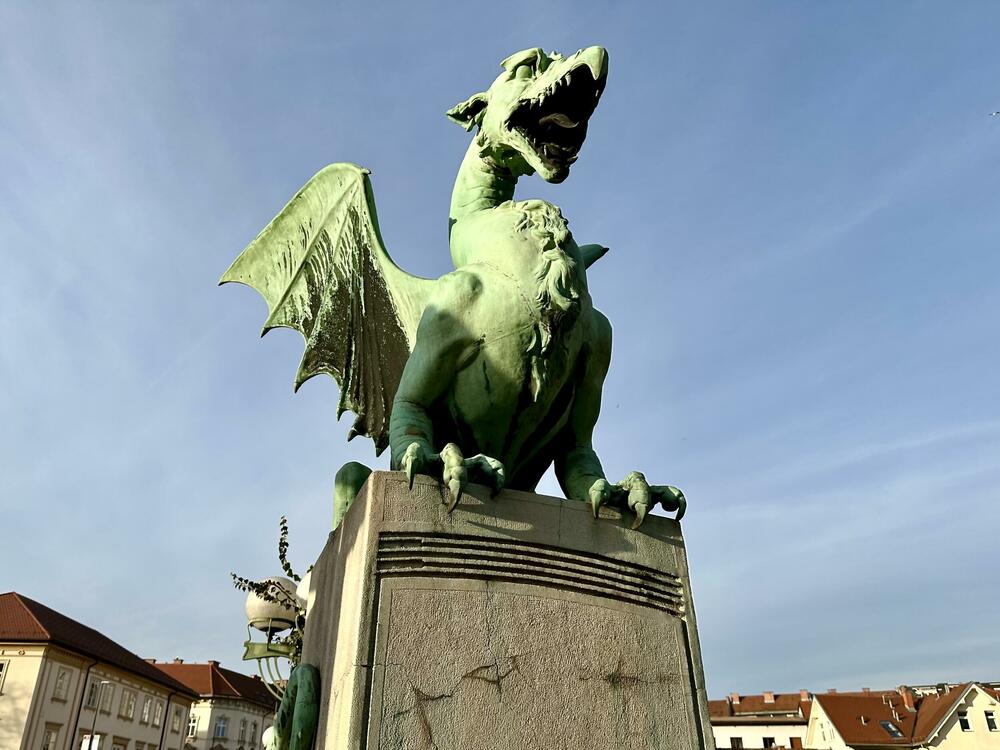
The years written on the side of the bridge - 1848 and 1888 - refer to the Austro-Hungarian monarch Franz Joseph. His subjects in Laibach, as Ljubljana was then called, decided to present him with a bridge for the fortieth anniversary of his reign, precisely in 1888. More than a decade passed from the decision to its implementation. After the fall of the monarchy, the bridge was no longer named after the long-lived ruler from the House of Habsburg, but after the decorative elements on the four corners - after the dragons from the Ljubljana coat of arms.
My personal connection to the bridge is a voice from a radio receiver, somewhere in the Bosnian interior of the seventies. All the children knew that when, say, Partizan football players visit Ljubljana, that the radio reporter will sooner or later call the Olimpija football players "dragons". Hence the green color of the jerseys. Faced with a stone mythical being, it's like meeting an old acquaintance.
In the dragon heart of the city
We live near that bridge, on the banks of the Ljubljanica. Since 1952, the street has been called Petkovškovo nabrežje after the painter Jožef Petkovšek. Before that, it was called St. Peter's Embankment. Even now, in February, the Ljubljanica is greenish and slow. The old city center is located along the banks, and above, on the hill, stands the fortified city of Ljubljana. All this together leaves a pleasant, harmonious impression on the eyes in the first slow feast.
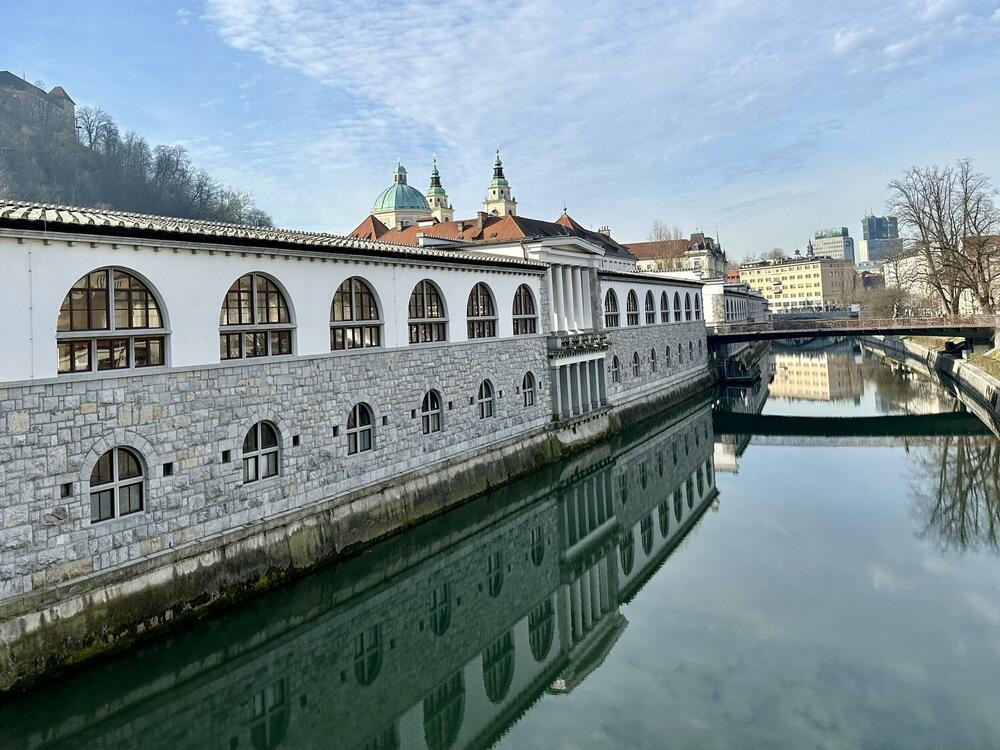
Climate change is kind to February travelers. It's clear, about thirteen degrees. The gardens of cafes and restaurants on the coast are getting fuller. People sit in winter coats and enjoy the gift of otherwise moody weather. We crossed the Dragon Bridge and passed through the market, where we will spend more time in the following days. The smell of food on Cyril-Metodov square. The famous Klobasarna has thrown several tables outside. After one of them, we are already enjoying the Carniola sausage and local wine. In a way, Kranjska is just as much a taste of childhood as one of its sound curtains "Day of Love". Slovenian composition Ashes and blood he represented us in 1975 at the Eurovision Song Contest in Stockholm.
For a long time we also thought that the children's song "Solčence zahaja" is a Slovenian folk song. And it's not. It was created by Serbian musicologist Miodrag Vasiljević for the needs of music classes in Serbia. There is not even a word "solčence" in Slovenian. Knowledge is fragile. Especially the ethnomusicological one.
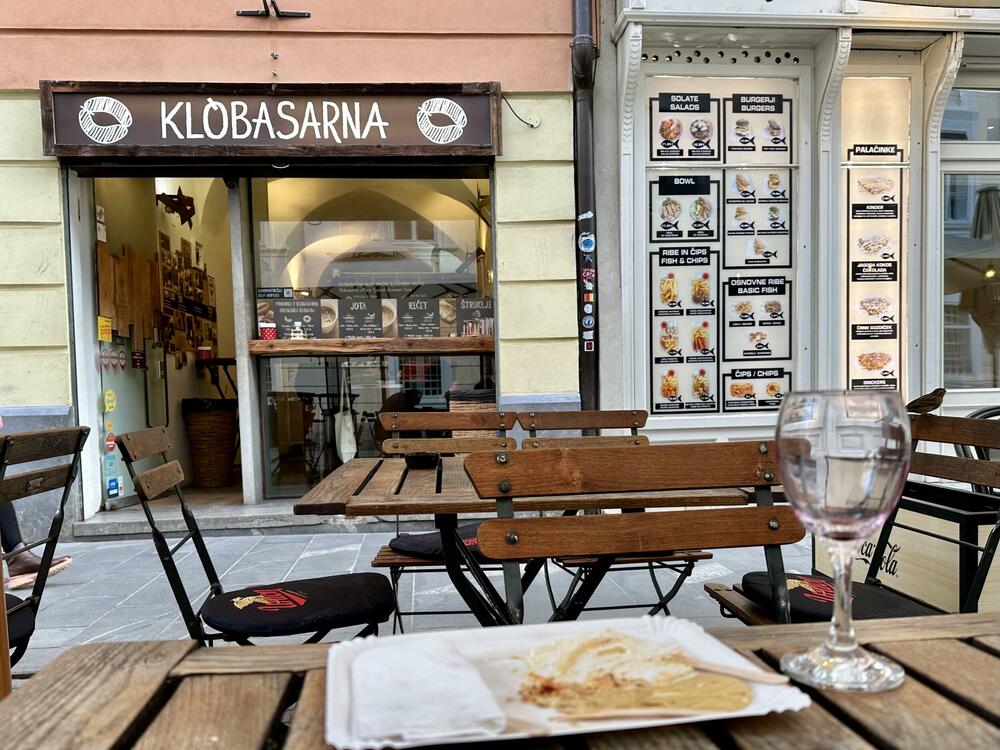
These thoughts go smoothly and effortlessly with the Carniola sausage and "redce" wine. We are in Ljubljana in the middle of winter and we are chatting at a table on a cobbled street. I know that "redce" is the Slovenian word for red because I heard it in one of the crazy Slovenian auteur films of the eighties where the protagonist calls out to his red-haired love. Thus, from the forgotten decades in the year 2024, concepts, refrains, and words emerge that I didn't even know I knew.
That evening, we walked around a large circle, discovering the charm of Ljubljana's eve, when church bells ring, street lights turn on to gaze at their reflection on the ever-darkening glass of the river.
Slovenes and Yugoslavs
We were lucky that EK Bistro was located a few hundred meters from the entrance to our apartment. We come on the recommendation of experts. On the shore, the waiter is already arranging the tables and chairs in the garden. We are slowly getting used to the fact that in Ljubljana low temperature is a relative term and that people are happy to sit in the gardens when their southern Slovenian brothers would not even think of it. We enter a bar designed in a post-industrial style and order a "sandwich with torn beef". It sounds promising, and it tastes even better. Refreshed in this way, we cross the Ljubljanica over the Wheat Bridge, walk along the shore all the way to the market square behind Plečnik's arcades, and buy a ticket for the funicular at Krekov Square. A type of rail lift connects the fortified castle of Ljubljana City with the foothills. Since 2006, several million people have climbed these glass cabins. We manage to grab places that guarantee a nice view of Ljubljana during the ascent, while on our backs we feel the envious glances of Chinese tourists, who are usually faster and more reckless on such occasions.
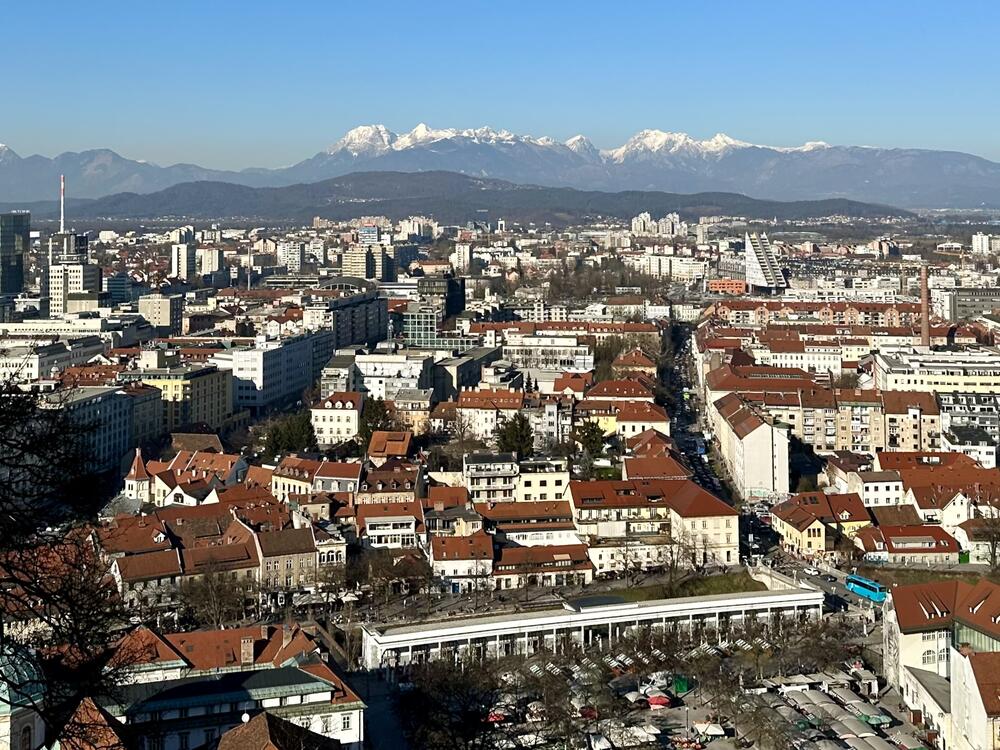
And indeed, the view is unbelievably beautiful. Ljubljanica with bridges, streets leading to it, a sea of roofs. The city of Ljubljana in the sun looks like many other fortified residences of the rulers. Ali is impeccably groomed. Two gourmet restaurants and one cafe, wine shop, exhibition and concert spaces and a museum. The fortress was first mentioned in the 12th century, it took on its current shape three centuries later, and the buildings inside the walls date from the 16th and 17th centuries. The Carniolan lords were followed by Frankish, Czech and centuries-old Habsburg rule.
First, we visit the exhibition "Silhouettes" by the famous visual artist Brane Širca. The exhibition space in the pentagonal tower is truly unique - it gives the avant-garde intention of the paintings a frame of stone and wood. Art profits from that collision.
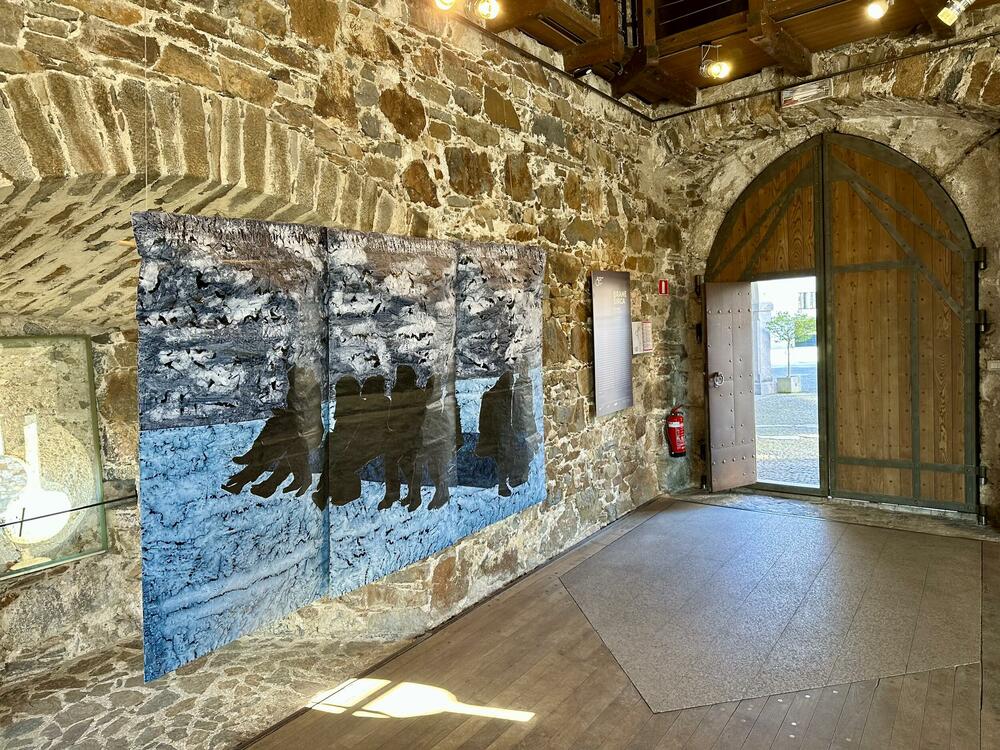
Then we cross the yard and stop by the entrance next to which it says "Prison". This part of the city of Ljubljana has served as a prison since the 19th century. We enter the former cells. Screams and wails emanate from the loudspeakers, trying to convey the harshness of the place. Hundreds of prisoners' names were written on one board. Among the names of famous Italian and Hungarian revolutionaries, I come across a name that I know from my school textbooks. The writer Ivan Cankar also enjoyed the Habsburg hospitality here. In August 1914, a tavern informant reported him for pro-Serb statements.
A few weeks of Cankar's obscenity here did not help the monarchy to survive, but they made his life miserable. It was not Ivan Cankar's first blackout. In 1913, during the Balkan wars, he was teaching Slovenes and Yugoslavs unequivocally advocated for Yugoslav unity. He was sentenced to seven days in prison and served his sentence in September 1913.
I remember Cankar's story "Servant Jernej and his right", which I read more than half a century ago. I look up the passage on the Internet. Cankar addresses God through Jernej's mouth: "You gave justice to people, and they hid it; she is gone; it is not found in cops, judges, or emperors..." Empires and kingdoms, states and empires arise and disappear, but some things remain the same.
Lajbach pub
We return by steep elevator towards the center of Ljubljana. We decided to look for a garden and try some Slovenian beer. It seemed to us that the Lajbach pub was the right choice. They offer craft and standard beers, and you can also have something to nibble on. We walk along the banks of the Ljubljanica towards the south, past fancy cafes and restaurants, we cross the fourth bridge from Tromostovaj, and we are finally there. The courtyard of the building on the left is full of tables, there is hardly any room behind them. People are having a casual conversation. All generations. Rock dominates the speakers. Frequent trips to the Yugoslav eighties. We managed to find a table outside and, facing the west, towards which the sun had already set, we tried a Slovenian craft beer and an Argentinian sandwich. We are convinced again that the drinks and food here are at the very top of Europe.
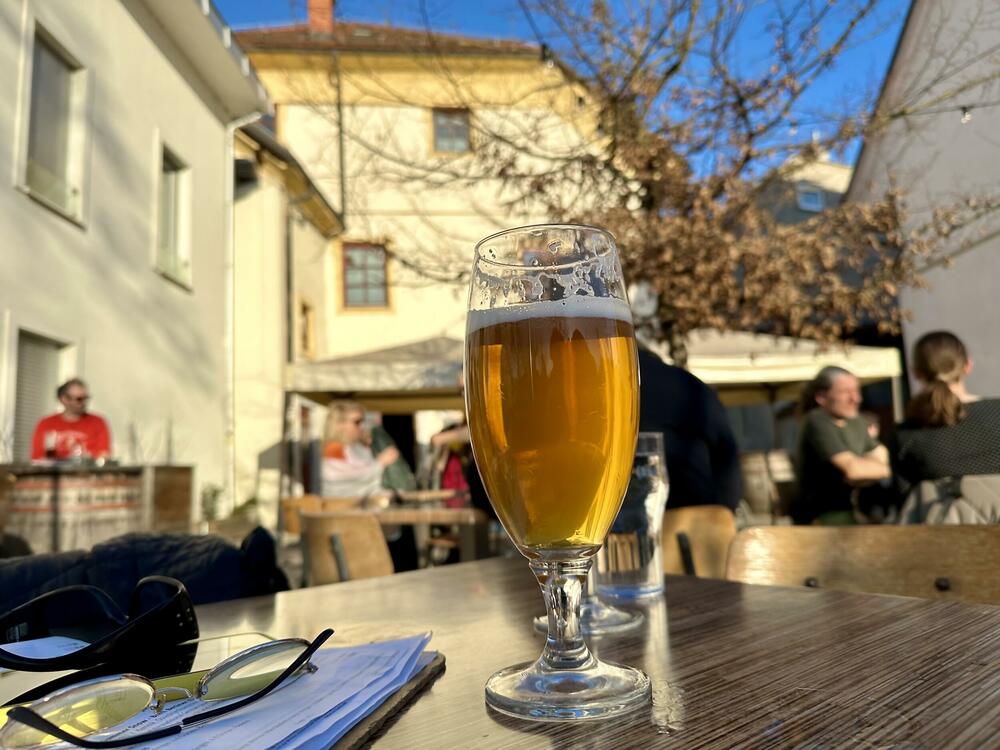
Moments like this should be remembered - they are precious. The waiter is friendly, people are talking animatedly, but no one stands out laughing too loudly or talking on the phone. Everyone is drinking beer, and there are no rowdies. The name of the pub reminded me of Noje sloveniše kunst and the band Lajbah. I was not a fan of their games with Nazi iconography. But in the West they managed to become a synonym for pure provocation. This pub, apart from the name, has no relation to those Leibachovs from the eighties. With beer, we wait in vain for something from Buldožer or Zoran Predin. We will have to make do with the Bajaga and the Steam Roller.
Struklji or struklji?
The next morning we go to Plečnik's arcades, because we have a very Slovenian breakfast in mind. In the restaurant Moji štruklji Slovenije they serve - so they say on forums on the Internet - the best type of Slovenian strudel. Slovenians regard štruklji as their own national specialty, although their Croatian neighbors claim the same for štruklji from Zagorje. While the Croatian version allows both cooking and baking - the struklji served to us by the friendly Slovenian waitresses have been thoroughly cooked.
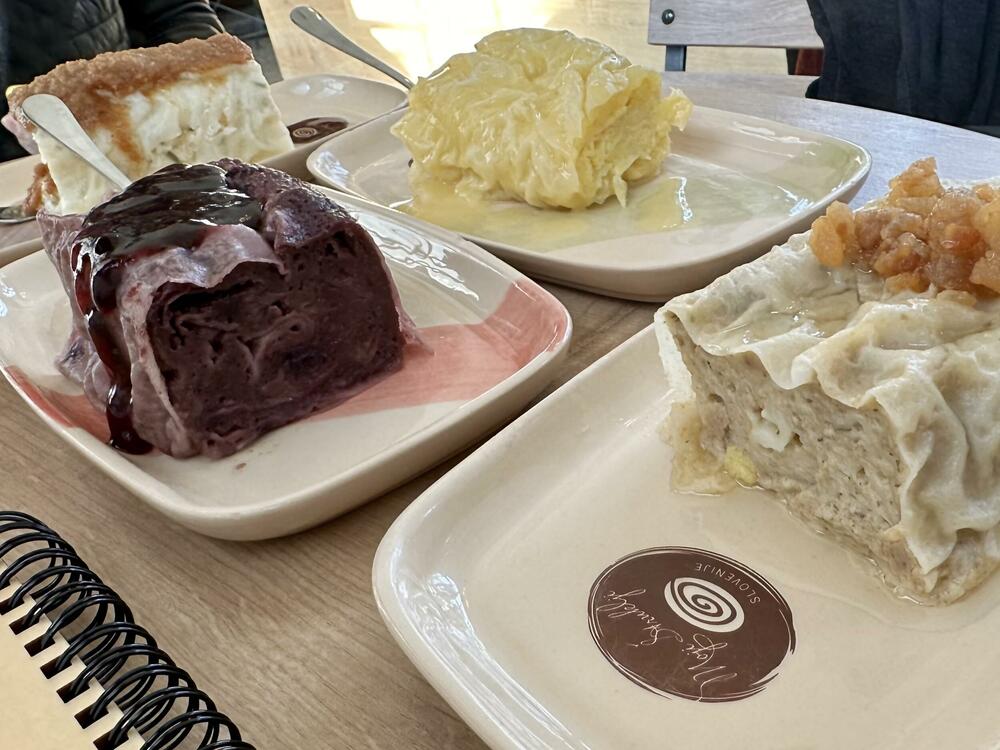
We didn't know that the pieces were big, so we ordered two savory and two sweet varieties. Afterwards we repented, but we fought heroically for almost an hour. People who are used to baked goods will not be delighted. All others who are not radical fans of Sarajevo or Niš burek will let the warm, sticky mass seduce them with its excellent taste.
It occurs to me that one day I will have to go to Zagorje, to see which side of the border is closer to the perfect, platonic idea of štruklja. Anyway, we've entered the third day of our stay in Ljubljana - we've already spent half the time, and we haven't yet visited Tivoli Park, visited cafes specializing in tasting original South American coffee. We also intended to enter several churches, museums, cultural centers. But that's from the story that follows.
Bonus video:



